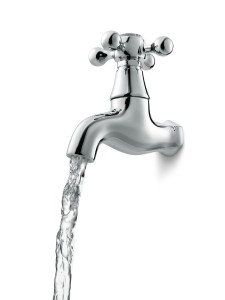When owning a home or a business, there are many monthly costs that have to be paid and vary each month, such as electricity, heat and water. This has deterred many people from entering the housing market or heading into entrepreneurship. A new report may discourage even more potential home buyers and business owners.
According to a study by water engineering firm Black & Veatch, two-thirds of water utilities in the United States aren’t generating enough revenues to cover their costs. What this means is higher water prices for the average U.S. consumer.
So far this year, the average family of four that uses 400 gallons per day has already faced a 6.2 percent increase in water rates. Although this has been the smallest year-on-year gain, prices have still gone up 33 percent over the past four years.
Consumer prices, meanwhile, have also risen 2.1 percent this year through the month of May.
 “People will have to pay more for water to make up the falling revenues,” Michael Orth, a co-author of the report and senior vice president at Black & Veatch, told CNBC. “And that’s likely to be more than the rate of inflation.”
“People will have to pay more for water to make up the falling revenues,” Michael Orth, a co-author of the report and senior vice president at Black & Veatch, told CNBC. “And that’s likely to be more than the rate of inflation.”
One of the reasons for the paucity of strong revenues is the drought in the southwest region of the country. The dryness has decreased revenues for water utilities, while also hurting water sources in the vicinity, which causes supply companies to pay more for water elsewhere.
A simple search on Google will show the numerous local counties voting to raise the rates on water bills. For instance, the town of Lyndon, Vermont changed the way its calculates a water bill – 80 percent monthly water charge and 20 percent base rate – but the cost of improving the water system has already surpassed the base rate. Farms, residents and businesses will now pay an 80 percent base rate and 20 percent monthly consumption.
The board of directors for the Lower Colorado River Authority (LCRA) has voted in favor of raising water prices for some customers, while Bend, Oregon will experience a hike in water rates by five percent and sewer services by nine percent.
“A lot of cities and municipalities may be tapped out when it comes to issuing bond initiatives to fund needed changes to water infrastructure,” added Orth. “There needs to be more of a public-private partnership to make this all work.”
Despite the eastern region getting enough rainfall to look after their cattle and help water supplies, experts say their water infrastructure is eroding and will have to find funding to help pay for improvements. Some states are taking advantage of the federal government’s low interest rate funding for water improvements.



